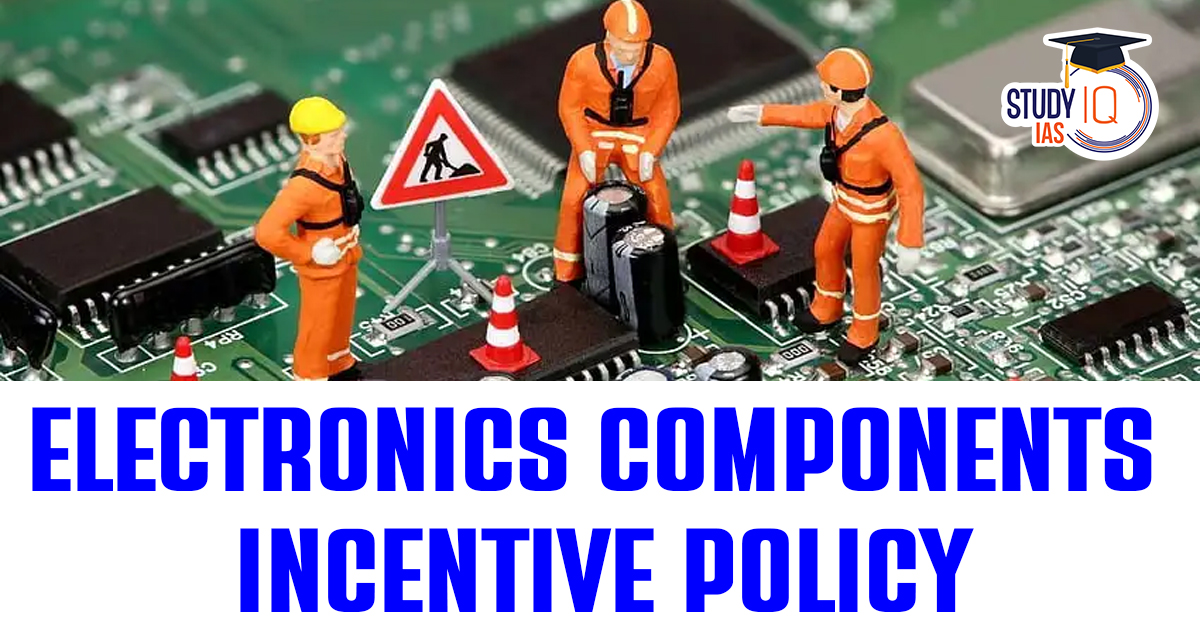Table of Contents
Context: The Ministry of Electronics and Information Technology (MeitY) has finalized an incentive policy for electronic components manufacturing with a total outlay of ₹22,919 crore over six years.
Key Features of the Electronics Components Incentive Policy Scheme
- Targeted Electronic Components: The scheme will focus on encouraging the production of key components that are currently imported, including:
- Display modules, Sub-assembly camera modules, Printed circuit board assemblies (PCBAs), Lithium cell enclosures, Resistors, capacitors etc.
- Employment Creation:
- Total Direct Jobs Target: 91,600 direct jobs over six years
- Increasing local value addition:
- The Production-Linked Incentive (PLI) scheme for smartphone manufacturing has been successful in attracting major companies like Apple and Samsung.
- However, despite the rise in domestic assembly, local value addition remains at 15-20%, and the government aims to increase it to at least 30-40%.
- Structure of Incentives: The scheme will offer three types of incentives:
- Operational Incentives – Based on net incremental sales, similar to the PLI model.
- Capital Expenditure (Capex) Incentives – Based on eligible capital investments.
- Hybrid Model – A combination of operational and capex incentives.
- Eligibility Criteria:
- Both Greenfield and Brownfield investments are eligible.
- Foreign companies can participate by:
- Transferring technology to an Indian company, OR
- Forming a joint venture with a domestic firm.
Key Challenges faced in Electronic Components Manufacturing
- Lack of Domestic Scale – India’s current capacity is only 10% of total electronics production.
- High Investment-to-Turnover Ratio –
- In smartphone production, every ₹1 invested generates ₹20 in revenue.
- In electronic components, every ₹1 invested generates only ₹2-4.
- Heavy Import Dependency –
- Electronics imports are India’s second-largest import category after oil.
- 75% of India’s electronics production relies on imported components.
- The demand-supply gap in the electronic components sector is huge:
- Current domestic production (2022-23): $10.75 billion.
- Domestic consumption gap: $100 billion.
- Potential export demand: $140 billion.


 Out-of-Pocket Health Expenditure, Reason...
Out-of-Pocket Health Expenditure, Reason...
 Treasury Bills (T-bills): RBI Cuts Holdi...
Treasury Bills (T-bills): RBI Cuts Holdi...
 Fisheries Sector in India, Current Statu...
Fisheries Sector in India, Current Statu...

























